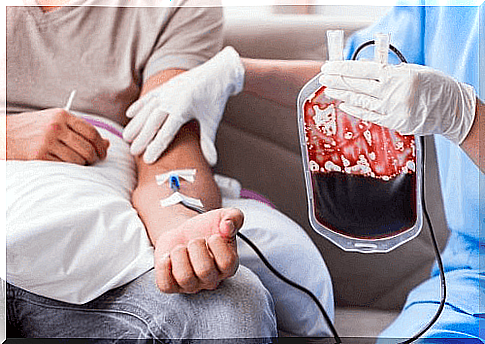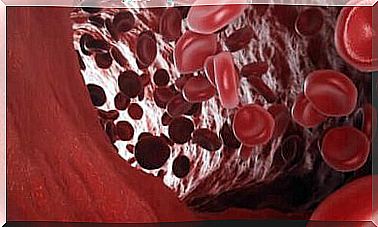Blood Transfusion, What Does It Consist Of?
Blood transfusion can save the lives of many people with bleeding, bone marrow problems or congenital illnesses.

Blood transfusion has become one of the cornerstones of modern medicine. This is a life-saving procedure that helps replace blood lost by certain injuries.
The first known transfusion of human blood took place in the 17th century. However, it was not until the 20th century that the different types of blood groups were identified. Thus, until then, transfusions could be fatal.
Blood group is a classification of blood according to the characteristics of red blood cells and serum. When a person is exposed to a blood group that is not their own, incompatibility reactions can occur and can lead to death.
This idea played a key role in the development of blood transfusion and now makes it possible to make it a safe and effective intervention. In this article, we tell you everything you need to know about it.
What is a blood transfusion?
Blood transfusion has become a routine procedure in medicine. This is a patient who receives blood, or some of its derivatives, from another person. Blood contains the following:
- Red blood cells (red blood cells), responsible for carrying oxygen and helping to eliminate waste
- White blood cells, which help the body fight infections
- Platelets, which are involved in blood clotting
- Plasma, which is the liquid part
To be able to perform a blood transfusion, a person must first have donated blood. The donor is a voluntary person who does not receive any remuneration for this gesture.
How do you donate blood?

Donation is a very simple procedure that can help save a person’s life. To be a donor, you must be in good health, weigh over 50 kg and not have anemia or other blood problems.
In order to make a donation, you must go to a specialized center or take advantage of health campaigns that generally take place in public places, such as universities or town halls.
To do this, you sit with your arm outstretched on an armrest. The person doing the blood test will measure your blood pressure and check that you are in optimal condition to donate. Then you are placed a tourniquet around your arm.
The tourniquet makes it easier to locate the vein and insert a needle into it. The needle must be sterile and the skin in the area must have been cleaned beforehand. After you have had the needle inserted, the blood will collect in a bag of approximately 470 ml.
The intervention is simpler than it seems. It is painless and lasts about ten minutes. You will then be given a small snack to help you recover. Usually there are no complications.
According to some studies, 92 million units of blood are donated each year. However, there is still a deficit of 22 million units worldwide. That is why we should all be encouraged to be blood donors.
What is blood transfusion used for?
Blood transfusion is used to treat patients who are deficient in any of the blood components. For example, it is used in patients who, due to a problem in their bone marrow, cannot make blood cells.
This procedure has many indications, such as the treatment of hemophilia, to ensure that these patients can carry out the clotting process properly. Other uses are:
- Bleeding, to replace blood volume
- Major surgeries in which a large amount of blood can be lost, such as organ transplants and wound repair
- Chronic anemia
- Patients on chemotherapy

What are the risks of this intervention?
In general, a blood transfusion is a safe procedure. However, even if the risk is low, complications can also occur. The most common are mild allergic reactions, which cause hives and fever.
On the other hand, it is important to know that few infections occur today. Today, donor blood is screened to exclude any transmissible infection such as HIV or hepatitis.
However, it is true that in some cases there are immune reactions to blood transfusions. The immune system then attacks the transfused red blood cells.
In conclusion
A blood transfusion is a life saving procedure for many people. It is important that we are aware and that all healthy people participate by donating blood. Someday you might be the one who needs blood from a donor.









